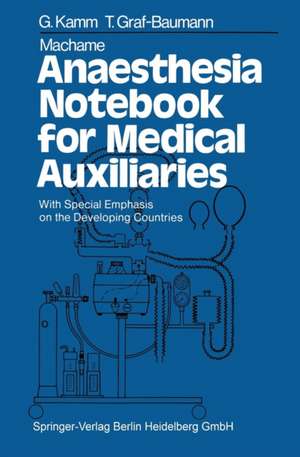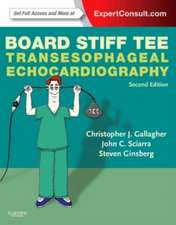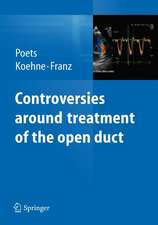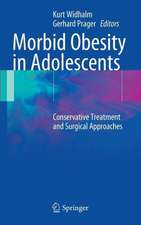Machame Anaesthesia Notebook for Medical Auxiliaries: With Special Emphasis on the Developing Countries
Autor G. Kamm, T. Graf-Baumannen Limba Engleză Paperback – mai 1982
Preț: 359.60 lei
Preț vechi: 378.54 lei
-5% Nou
Puncte Express: 539
Preț estimativ în valută:
68.81€ • 72.04$ • 56.94£
68.81€ • 72.04$ • 56.94£
Carte tipărită la comandă
Livrare economică 05-19 aprilie
Preluare comenzi: 021 569.72.76
Specificații
ISBN-13: 9783540090557
ISBN-10: 354009055X
Pagini: 176
Ilustrații: XVII, 154 p. 50 illus.
Dimensiuni: 133 x 203 x 9 mm
Greutate: 0.19 kg
Editura: Springer Berlin, Heidelberg
Colecția Springer
Locul publicării:Berlin, Heidelberg, Germany
ISBN-10: 354009055X
Pagini: 176
Ilustrații: XVII, 154 p. 50 illus.
Dimensiuni: 133 x 203 x 9 mm
Greutate: 0.19 kg
Editura: Springer Berlin, Heidelberg
Colecția Springer
Locul publicării:Berlin, Heidelberg, Germany
Public țintă
ResearchCuprins
1. A Short Review of the Anatomy and Physiologyof the Respiratory System.- 1.1 Anatomy.- 1.2 Physiology.- 1.3 Oxygen.- 1.4 Anatomy and Physiology of the AutonomicNerve System.- 2. Pharmacology of General Anaesthesia.- 2.1 Inhalation Anaesthesia.- 2.2 Intravenous Anaesthesia.- 2.3 Neuromuscular Blocking Drugs.- 2.4 Other Drugs Used in Anaesthesia.- 2.5 List of Drugs Commonly Used in Anaesthesia.- 3. Pre-operative Examination.- 3.1 History of the Patient.- 3.2 Clinical Examination.- 3.3 Laboratory Investigations.- 3.4 Summary.- 3.5 Comments.- 3.7 Laboratory Investigation.- 3.8 Remember.- 4. Premedication.- 4.1 Lowering of Reflex Activity.- 4.2 Sedation and Reduction of Anxiety.- 4.3 Premedication for Children and Infants.- 4.4 Summary.- 5. Maintenance of the Airway.- 5.1 Causes of Respiratory Obstruction in the Patient.- 5.2 Intubation.- 5.3 Artificial Ventilation of the Lungs.- 6. Anaesthesia Techniques and Equipment.- 6.1 Open Method.- 6.2 Half-Open Method or Semi-Open System.- 6.3 Half-Closed System.- 6.4 Closed System.- 6.5 PEEP Respiration.- 7. General Anaesthesia Techniques.- 7.1 Barbiturate — Ether — Air.- 7.2 Ketalar — Ether — Air.- 7.3 Neuroleptica — Ether — Air.- 7.4 Induction Followed by 02+N20+Halothane.- 7.5 Maintenance of Anaesthesia.- 7.6 Monitoring.- 7.7 Recovery.- 7.8 Relaxation and Artificial Ventilation.- 8. Anaesthesia in Obstetrics.- 8.1 Drugs.- 8.2 Adequate O2 Tension.- 8.3 General Anaesthesia for Caesarean Section.- 8.4 Care and Resuscitation of the Neonatal.- 9. Paediatric Anaesthesia.- 9.1 Equipment.- 9.2 Technique of Anaesthesia.- 10. Ketalar-Mono Anaesthesia.- 10.1 Short-Acting Anaesthesia.- 10.2 Anaesthesia for Longer than 20 Minutes.- 10.3 Indication and Technique.- 10.4 Scoline-drip as Muscle Relaxant.- 11. Anaesthesia forOphthalmic Surgery.- 12. Anaesthesia and Associated Medical Problems.- 12.1 Anaemia.- 12.2 Sickle Cell Anaemia.- 12.3 Heart Disease.- 12.4 Hypertension.- 12.5 Chest Disease.- 12.6 Chronic Chest Disease.- 12.7 Liver Disease.- 12.8 Renal Disease.- 12.9 Diabetes.- 13. Local Anaesthesia.- 13.1 Pharmacology.- 13.2 Indications of Local Anaesthesia.- 13.3 Complications.- 13.4 Types of Local Anaesthesia.- 13.5 Technique.- 13.6 Spinal Anaesthesia.- 13.7 Epidural Anaesthesia.- 14. Management of Emergency Situations.- 14.1 Cardiac Arrest.- 14.2 Shock.- 14.3 Poisoning.- 15. Fluids and Electrolytes.- 15.1 Acidosis and Alkalosis.- 15.2 Electrolytes.- 16. Intensive Care Unit (I.C.U.).- 16.1 Trained Personnel.- 16.2 Special Establishment.- 16.3 Equipment.- 17. Fear and Confidence.- References.














